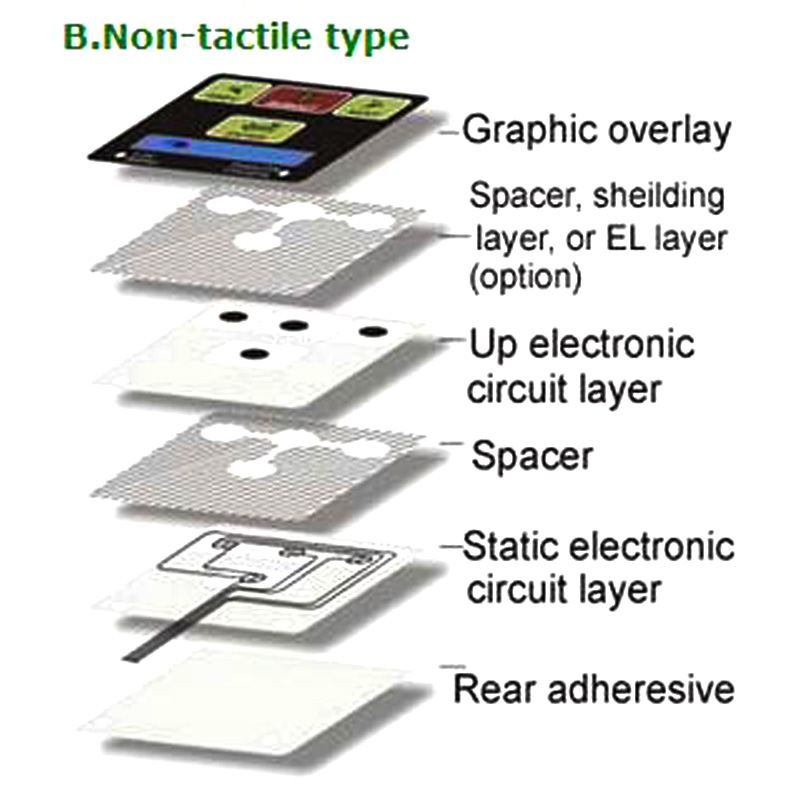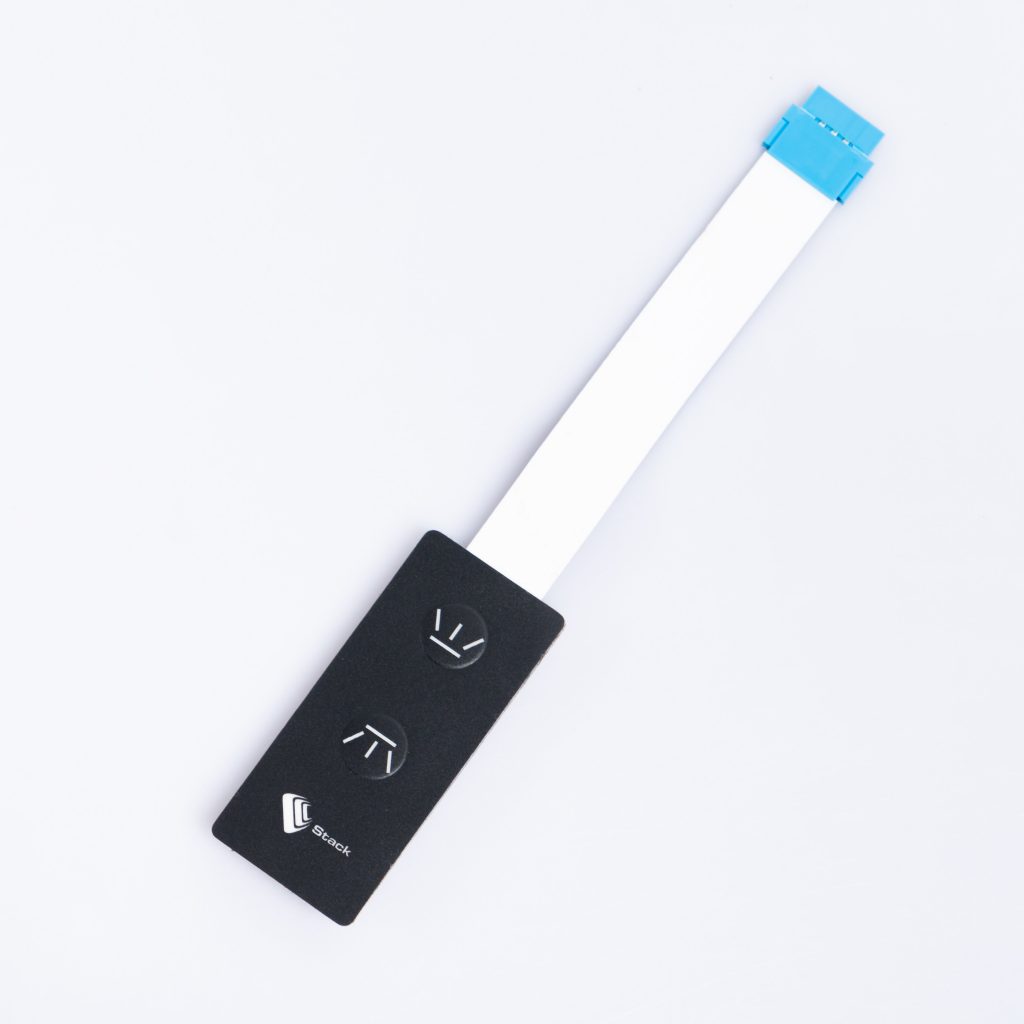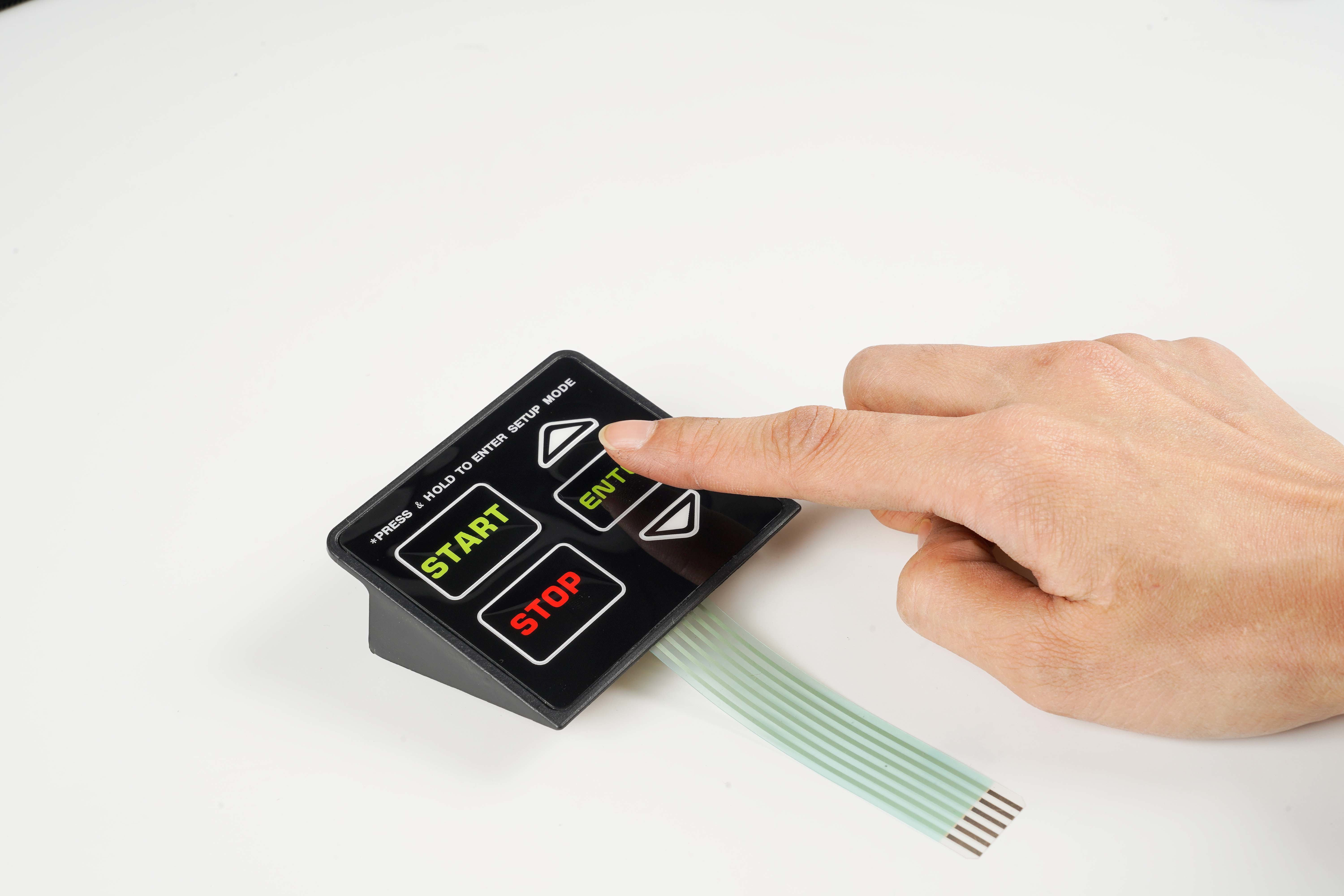The Manufacturing Refine Behind Membrane Layer Change: What You Required to Know
The production procedure behind membrane switches combines careful design, product selection, and quality control. It starts with recognizing the complexities of membrane layer button design and proceeds with various stages, consisting of material choices and printing methods. Each stage plays an essential function in making certain capability and durability. Nevertheless, the intricacies of layer building and construction and the extensive screening standards might reveal understandings that are not instantly noticeable. What lies past these foundational components?
Recognizing Membrane Switch Over Design
Membrane switches might appear easy at very first look, their layout includes detailed considerations that assure functionality and sturdiness. The style process begins with a comprehensive understanding of user demands, including the user interface's intended application and environmental elements. Ergonomics is a key element, as the format needs to promote simplicity of use while making sure that tactile comments meets customer expectations.Moreover, the layering of components, such as graphic overlays, glue layers, and conductive traces, need to be precisely crafted. membrane switch. This layered configuration not just affects the switch's responsiveness yet additionally influences its long life. Attention is given to the sealing strategies utilized to safeguard against moisture and dirt, which might endanger performance. In addition, design considerations include aesthetics, where color pattern and aesthetic clearness improve customer experience. Inevitably, the design of membrane layer switches equilibriums capability, user experience, and toughness, making sure that they fulfill the demands of numerous applications successfully
Materials Made Use Of in Membrane Switch Manufacturing
When picking products for membrane layer switch production, it is vital to consider both efficiency and resilience. The key products consist of polyester and polycarbonate films, which provide flexibility and toughness. These movies are often coated with sticky to assure correct bonding to substratums. Conductive inks, commonly made up of silver or carbon, are essential for developing electrical connections within the switch, permitting dependable operation.Additionally, a protective layer, such as a difficult coat, is often related to improve scratch resistance and durability. The option of backing material, such as acrylic or foam, can substantially affect the button's tactile feel and total individual experience. Furthermore, various environmental variables, including temperature level and humidity, need to lead product option to assure peak performance in certain applications. Inevitably, the right mix of products contributes to the membrane layer switch's capability and life expectancy, making informed choices important for suppliers.
The Printing Process: Creating Video and Text
The printing procedure in membrane button manufacturing plays a substantial role in generating high-quality graphics and text. Numerous visuals style strategies are used to ensure visual charm and functionality, while cautious ink option methods are crucial for durability and efficiency. Understanding these aspects is essential for accomplishing finest outcomes in membrane switch design.
Graphic Design Techniques
Graphic layout strategies play a necessary function in the printing procedure of membrane buttons, as they define just how graphics and message will inevitably show up on the end product. Reliable graphic layout includes the calculated use of colors, font styles, and formats to enhance readability and aesthetic appeal. Developers usually use vector graphics for scalability, making sure that images remain sharp at different sizes. In addition, interest to contrast and placement is important, as it affects user communication and aesthetic top quality. The incorporation of branding components, such as logo designs, must be managed with like maintain brand name integrity. In general, thoughtful visuals style methods add significantly to the performance and appearance of membrane layer buttons, affecting individual experience and item efficiency.
Ink Choice Methods
Choosing the suitable ink is necessary for achieving the wanted visual quality and resilience in membrane switch manufacturing. Numerous ink types are utilized, consisting of solvent-based, water-based, and UV-curable inks. Each type supplies distinctive characteristics, such as versatility, adhesion, and resistance to ecological factors. Solvent-based inks are commonly preferred for their longevity and vivid colors, while water-based inks are extra eco-friendly but may have constraints in attachment. UV-curable inks supply fast treating and durable performance. Additionally, color matching techniques guarantee that the selected inks straighten with style specifications. Ultimately, the selection of ink need to consider elements such as application approach, substrate compatibility, and end-use needs to attain superior cause membrane layer button graphics and text.
Layer Building And Construction and Assembly

Material Choice Refine
A cautious selection of products is vital in the production process of membrane layer buttons, as it straight affects capability and durability. The key materials utilized include polyester, polycarbonate, and numerous conductive inks. Polyester is frequently preferred for its outstanding resistance to chemicals and abrasion, making it appropriate for extreme atmospheres. Polycarbonate, on the other hand, offers remarkable clarity and impact resistance, which is beneficial for applications calling for presence and robustness. Conductive inks, typically made up of silver or carbon, are essential for producing reliable electric pathways. In addition, the selection of sticky materials affects the overall site web integrity of the button - membrane switch. Reviewing factors such as environmental exposure, responsive feedback, and aesthetic demands guides manufacturers in choosing the best materials for their details applications
Layer Attachment Strategies
Adhering layers in membrane layer button building is a vital procedure that ensures functionality and long life. Numerous bond strategies are employed to safeguard suitable bonding between layers, which commonly consist of making use of adhesives, warmth, and stress. Pressure-sensitive adhesives (PSAs) are generally utilized for their convenience of application and instant bonding capacities. Additionally, thermal bonding methods can be used, where heat is used to activate glue homes, securing a strong bond. The choice of bond approach largely relies on the materials included and the certain application requirements of the membrane button. Appropriate alignment and consistent application of adhesives are crucial to avoid issues, protecting the button operates efficiently throughout its intended lifespan.
Top Quality Control Actions
Guaranteeing quality assurance during the layer construction and assembly of membrane layer switches is important for keeping performance and integrity. This process typically entails several important procedures, including detailed assessments at each stage of production. Makers use innovative testing techniques, such as peel examinations and attachment assessments, to verify the integrity of layer bonds. Additionally, visual inspections are conducted to identify any type of flaws in printing or product inconsistencies. Environmental problems, such as temperature level and humidity, are carefully monitored to assure perfect curing and adhesion. Regular calibration of devices assists preserve exact manufacturing criteria. By carrying out these quality assurance steps, suppliers can substantially decrease the threat of product failing, assuring that the final membrane layer switches fulfill the called for requirements and customer expectations.
Checking and High Quality Control Actions

Developments in Membrane Switch Over Modern Technology
As improvements in technology remain to progress, membrane switches are benefiting from innovative developments that enhance their functionality and customer experience. One notable technology is the combination of capacitive touch modern technology, which permits more intuitive and receptive individual interfaces. This shift not just enhances aesthetic appeals however also lowers mechanical damage, prolonging the life expectancy of the switches.Additionally, improvements in graphic overlay materials have actually brought about enhanced toughness and resistance to ecological factors such as moisture and UV light. These materials currently provide boosted clarity and illumination, more boosting the visual appeal.Furthermore, the consolidation of smart innovation is transforming membrane layer switches into interactive control panels, making it possible for connection with IoT devices. This connectivity cultivates a smooth user experience, leading the way for applications in numerous industries, from healthcare to customer electronics. Jointly, these technologies setting membrane switches as critical elements in modern gadget my site style.
Regularly Asked Questions
For how long Does the Membrane Switch Over Manufacturing Process Take?
The duration of the membrane layer switch production procedure can vary significantly. Elements such as intricacy, materials used, and manufacturing volume influence timelines, with common production ranging from a few days to a number of weeks for conclusion.
What Are the Common Applications for Membrane Layer Buttons?
Membrane buttons are commonly used in various markets, including automobile controls, home appliances, clinical gadgets, and customer electronics (membrane switch). Their flexibility and sturdiness make them optimal for applications needing straightforward user interfaces and dependable efficiency in varied settings
Can Membrane Layer Changes Be Custom-made for Specific Needs?

What Is the Life expectancy of a Regular Membrane Switch?
The life expectancy of a common membrane button differs, but usually, it ranges from 1 to 5 million cycles. Elements such as usage, setting, and material top quality significantly influence resilience and total efficiency with time.

Are Membrane Switches Eco-friendly?
The ecological kindness of membrane changes varies. Some materials utilized may not be recyclable, while others can be eco-friendly. The general influence relies on manufacturing products and practices, demanding cautious factor to consider throughout option and disposal. The manufacturing process behind membrane switches over combines mindful layout, material selection, and high quality control. It starts with recognizing the ins and outs of membrane button style and progresses with various stages, including material options and printing techniques. When choosing materials for membrane button production, it is essential to consider both performance and toughness. A careful option of products is necessary in the production procedure of membrane layer switches, as it directly affects capability and toughness. The option of adhesion approach mostly depends on the materials involved and the specific visit our website application needs of the membrane button.